

To define erotic manga, a definition for manga is needed. Due to the influence of pornographic photographs in the 19th and 20th centuries, the manga artwork was depicted by realistic characters. Osamu Tezuka helped define the modern look and form of manga, and was later proclaimed as the “God of Manga”. His debut work New Treasure Island was released in 1947 as a comic book through Ikuei Publishing and sold over 400,000 copies, though it was the popularity of Tezuka‘s Astro Boy, Metropolis, and Jungle Emperor manga that would come to define the media. This story-driven manga style is distinctly unique from comic strips like Sazae-san, and story-driven works are now dominating shōjo and shōnen magazines. Adult themes in manga have existed since the 1940s, but some of these depictions were more realistic than the cartoon-cute characters popularized by Tezuka.
The idea of Lolicon didn’t originate in Japan. It originated in the book Lolita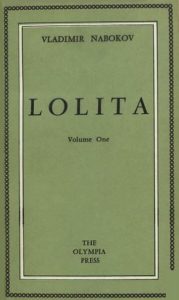 (1955) created by Russian American author Vladimir Nabokov. The story Lolita is a love story between 12-year-old Dolores Haze and her step father (who calls her lolita). The book of Lolita was translated into Russian in 1967 by the author. The Lolita Complex by Russel Trainer was a non-fiction essay examining themes of sexuality in regard to adult male attraction to adolescent girls. These 2 influences are quite possibly where Japanese individuals got a hold of this material and used it to influence many of there shojo works during the 1970’s.
(1955) created by Russian American author Vladimir Nabokov. The story Lolita is a love story between 12-year-old Dolores Haze and her step father (who calls her lolita). The book of Lolita was translated into Russian in 1967 by the author. The Lolita Complex by Russel Trainer was a non-fiction essay examining themes of sexuality in regard to adult male attraction to adolescent girls. These 2 influences are quite possibly where Japanese individuals got a hold of this material and used it to influence many of there shojo works during the 1970’s.
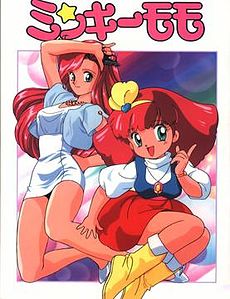
It wasn’t till the 1980’s the lolicon genre really took root and spread within anime industry. Through the use of shoujo or magical girl genre titles like Maho No Mako-chan (1970), Minky Momo (1982), and Majoko Megu-chan (1974) . These shoujo characters where created to look younger. The first example of the word lolita being used in anime was in “Stumbling upon a Cabbage Field” an Alice and Wonderland parody manga by Shinji Wada created in 1974. In comparison one of the first lolita characters is often considered to be Clarisse (16 years old) from Lupin III: Castle of Cagliostro (1979). Uran/Astro Girl/Zoran was a cute younger character added to the 1963 version of Astro Boy and decades later.
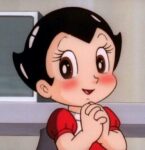
Japanese laws have impacted depictions of works since becoming law in 1907, Article 175 of the Criminal Code of Japan forbids the publication of obscene materials. Specifically, depictions of male–female sexual intercourse and pubic hair are considered obscene, but bare genitalia is not. In 1986, Toshio Maeda sought to get past censorship on depictions of sexual intercourse, by creating tentacle sex. It was also because of this law that the artists began to depict the characters with a minimum of anatomical details and without pubic hair, by law, prior to 1991.

The lolicon manga genre began in the 1980s with Azuma Hideo ‘s works, such as The Machine Which Came from the Sea (海から来た機械 Umi kara Kita Kikai). In 1979, Azuma had previously published the first “blatantly lolicon” manga in his own self-published dōjinishi magazine Cybele. Azuma’s works became popular among schoolboy readers because most of the pornographic manga up until then had featured mature women influenced by gekiga. Other dōjinshi magazines began featuring “underage or barely pubescent virgins” in erotic contexts and by the late 1980s this “fantasy genre” had spread to some mass market magazines. Lolicon manga are usually short stories, published as dōjinshi (fan works) or in magazines specializing in the genre.
The very first loli video was Lolita Anime (1984) which had a heavy rape focus to it. But it was actually Cream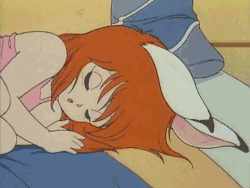 Lemon (1984) that really had a long standing success. Cream Lemon was a collection of somewhat surreal stories having different settings and situations at different points in time, with genres including fantasy, comedy, suspense, sci-fi, action, drama and mystery. The overriding theme of the series is sex of almost any kind imaginable. Most chapters stand alone as separate titles, having no relation to any other stories within the Cream Lemon series. The main recurring characters are a brother, Hiroshi, and sister, Ami, who are edging ever closer to an incestuous relationship. It continued from 1984-1990 and then continued almost a decade later.
Lemon (1984) that really had a long standing success. Cream Lemon was a collection of somewhat surreal stories having different settings and situations at different points in time, with genres including fantasy, comedy, suspense, sci-fi, action, drama and mystery. The overriding theme of the series is sex of almost any kind imaginable. Most chapters stand alone as separate titles, having no relation to any other stories within the Cream Lemon series. The main recurring characters are a brother, Hiroshi, and sister, Ami, who are edging ever closer to an incestuous relationship. It continued from 1984-1990 and then continued almost a decade later.

Cybele Henshuubu Vol.1-7 was technically the first lolicon anthology series. They used grey and black covers. They ran from 1979-1981 and had a few bonus releases. A few of them have been scanned and are clearly lolicon themed. The artists to know from the series were Oki Yukao, Azuma Hideo, and Eimu Yuu. Other artists did make contributions to the series as well. During the 80’s many one or two shot anthologies started without a successful run afterwards. Not a lot of these release were successfully scanned. You can find most known releases covered in the doujinshi website that scans covers, logs release info, and stores hentai in a database.
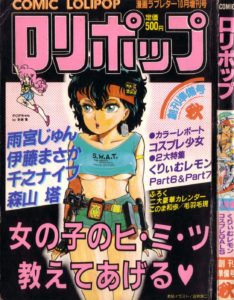
The first ongoing lolicon doujin series was Lemon People and it’s short lived competitor Manga Burikko. Common focuses of these stories include taboo relationships, such as between a teacher and student or brother and sister, while others feature sexual experimentation between children. Schoolgirls accidentally showing their underwear were a common occurrence in the early lolicon genre. Several color specials were released. Lemon Kids began years later in 1989 and ran 15 issues until 1991. It helped debut the fetish heavy Bondage Fairies series by Kondom.
In 1985, Comic Lollipop debuted and carried on a 6 year anthology run until it ended in 1990. It featured art by classic artists Araki Akira and Juan Gotoh.
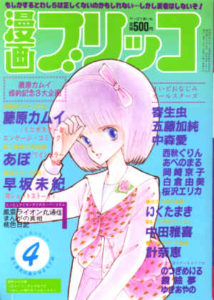
Frederik L. Schodt and Dinah Zank both suggest that Japanese laws prohibiting the depiction of pubic hair may have encouraged the spread of “erotic manga with a rorikon flavor”. Throughout the 1980s, notable manga artists who published lolicon in these magazines included Hayasaka Miki, Kamui Fujiwara, Okazaki Kyouko, Kakinouchi Narumi, Takaya Yoshiki peaking in the mid-1980s. You can view other artists who began in the 1980’s in this Golden Age gallery page, many who did not become well known in the decade after. They do include Mac-V & Maka Fushigi who began their long careers way back at the end of the 80’s.

One the earliest active and primary stars of the 80’s Golden Age period was Uchiyama Aki. This artist had a plethora of their own manga throughout the golden age on their own. An unheard of feat in the early days of the genre and many have been scanned and collected in the digital age. Nakajima Fumio may have started a year prior to Uchiyama (1979), had just as many tankoubon, and also a realistic style, but practically none of them have been scanned. Not many Golden Age books exist in digital form and most that did are multiple artist doujin collections. There were a few other series that started in the 80’s and several have continued well into the silver and modern age. Comic Penguin Club began in 1986 and has had over 300 issues since. Comic Penguin Club Sanzokuban began 3 years later in 1989 and has had the same long run as well.

Certain anime featuring “magic girls” types re-emerged in the 90’s. Sailor Moon emerged as did Card Captor Sakura. A key feature of the heroines of Sailor Moon is that their transformations make them look more feminine, as well as make them stronger. Frederik L. Schodt has suggested that one reason lolicon manga is popular with some fans is because the female characters portrayed are “younger, slightly softer, and rarely possessing an in-your-face aggressive feminism” which is often found in female characters in American comics. The style of the 80’s was very censored, primitive, and very light on the sex acts.

That was to evolve through the 90’s. An early lolicon series was Lolikko LOVE which began in 1994 and ran 12 issues through 2000. It included Teruki Kuma (who also contributed to Lemon People in the 80’s) and a dozen other dedicated loli artists. Another classic lolicon artist from the 90’s was Hanamizawa Q-tarou. He put a wide variety of lolicon doujin and collections out through the 90’s. Other early 90’s lolicon artists included Ichiichi Yuuna, Sarada Masaki (now known as Salad), Minion, Hayashibara Hikari (Situation series) and Kinoshita Rei.
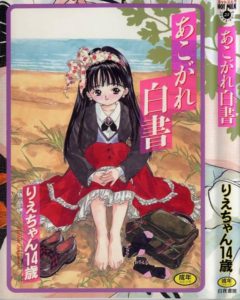
Another lolicon artist to pave the way was Rie-chan 14-sai who began in the mid 90’s and had several manga collections of their work survive into the digital years. He was responsible for early yuri doujin which featured young lesbian content as well as futunari, which featured girls with penises. He later joined Comic Lo for a short run in 2005. Oyari Ashito also brought forth a very European romantic deco style to match.
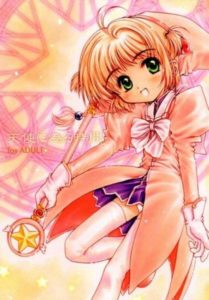
Focke Wolf under the Circle name SuperFlatLolinitron was one of the key artists to do doujin for Card Captor Sakura. He joined the anthology series of Milk Comic Sakura that began in 1998 and later became a regular for Comic Rin. Machida Hiraku brought forth a style that was much more realistic and tragic based and he began his long career in the mid 90’s with his own tankoubon, which continue to this day. Other well known late 90’s lolicon artists were Manno Rikyu, Marcy Dog, Wang-Pac, Kokekokko Koma, Nishi Iori, Paint Robo, and Nekogen. Some became even better known in the silver age while others eventually stopped producing lolicon.
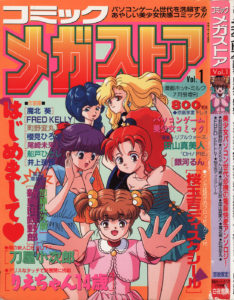
Rie-chan 14-sai contributed to the very first Comic Megastore which started with a special edition in 1993 and then with its ongoing series actually beginning in 1999. Little Pierce began in 1996 and continued into 2004. Comic Alice Club was a short lived anthology from 1997 to 1998 but revived in 2001. Comic Hotmilk began in name in 1997, but not as its current series until 2008. Comic Tenma began in 1998 and Comic Mujin in 1999. Both have had well over a hundred issues since. Hentai began expanding rapidly at the dawn of the new decade and lolicon too, but it was only hinting at the explosion of artists, detail, and support to come.
